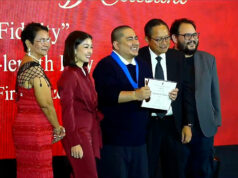CCP’s 50-year-old Main Building gets an overhaul
DESIGNED by National Artist Leandro Locsin, the Main Building of the Cultural Center of the Philippines (CCP) turns 53, and it is time for a long-overdue overhaul. It will take three years to rehabilitate, starting this year until 2025.
The issues that needed to be addressed — which includes termite infestations, electrical and drainage system repairs, and updating equipment and areas that have not been touched since the building was first opened — emanated from a building audit done from 2018 to 2019.
“The building audit diagnosed the extent of the repair needed,” said CCP chairperson Margie Moran-Floirendo in a statement. “The evaluation of the data gathering indicated that there are problems with multiple-site damages such as leaks, corrosion and structural weaknesses brought by water seepage, earthquakes and fatigue. Further, we have to update the Center’s fire protection, environmental protection and other building codes.”
The entire project will cost around P950 million, with P440 million earmarked for the first phase, and P515 million for the second phase which will include the renovation of the hydraulic pit, the freight elevators, and the light and sound systems for the theaters.
Spearheaded by Ms. Moran-Floirendo, a fund-raising project was kicked off during Bulawan: The CCP 50th Anniversary Gala, with BDO Unibank, Inc. underwriting the gala concert and donating the first P1 million.
“We’re hoping for additional fundings from the government so we can include other important elements. We envision that when fully renovated, the CCP Main Building would last for another 50 years,” CCP administrative manager Teresa Rances was quoted as saying in a CCP release.
The rehabilitation of the Main Building will begin at the fourth floor, roof deck, and the Tanghalang Aurelio Tolentino (CCP Little Theater). Over the next two years, the plan targets the other floors. All the renovation work will run until 2025, and include the upper and lower basements.
“The priority right now is the Tanghalang Aurelio Tolentino (CCP Little Theater). When we installed the new escalators, from the ground to the top floor, we realized that the flooring of the Main Theater lobby escalators is directly connected to the ceiling of the LT backstage. We need to repair the ceiling,” said Ms. Rances.
Based on the plan, the Main Theater will be the last to be rehabilitated, probably starting in 2024. This includes the renovation of the hydraulic orchestra pit, which has not been changed since it was installed in 1969, and the freight elevator, which is often used to bring massive sets, heavy equipment, and musical instruments straight to the theater stage. Both the Main Theater and the Little Theater have flooring problems and termite infestations in the walls.
“When CCP was built in 1969, they used good construction materials,” said Ms. Rances. “Even 50 years later, the building has no major structural problems even with major earthquakes and other natural phenomena we have experienced…. There are cracks on walls, but the foundation is still stable.”
The audit report also showed that there was a need to overhaul the electrical lines and the drainage system. A new outdoor cistern tank will be constructed at the South Parking area to supply water to the Main Building and the nearby Production Design Center, and to supply water to the fire sprinklers. A foam-type fire system has been installed in areas where artworks are located to protect CCP’s valuable assets.
“Some of these renovations have been done at the height of the COVID-19 pandemic. We have started upgrading our mechanical, electrical, plumbing and fire system. We will also start the structural retrofitting. We start with what we can with the budget that we have,” said Ms. Rances.
So far they have upgraded the centralized air-conditioning system, replaced glass window panels, carpets and marble trims, and refurbished the fountain. The chandeliers have undergone rehabilitation too.
“We were lucky to be able to tap the same companies that designed and built the fountain and chandeliers in 1969. When we bid out the fountain renovation, the daughter of the original designer sent their proposal. It was the same with the chandeliers,” said Ms. Rances.
With the expected sea level rise from climate change, the two major power banks as well as the generator have been transferred from the lower basement to the new Power Center in the South Parking area.
While the rehabilitation is underway, the CCP plans to document the process and share it with the community, particularly the architecture students, through various platforms. This can be used as a reference on rehabilitation of architectural heritage buildings and other cultural sites in the country. It can help in the studies on how architectural designs are affected by topography and climate change. There will be interesting things for architects, construction companies and students.
“In the end, we aim to be at par with theaters worldwide, in terms of technology, space and content. A country’s theater is a landmark. The CCP is the home of the Filipino artists, and it should be a tourist destination. For the artists and cultural workers, the wish list is long. Work and rehearsal spaces are needed. But with the rehabilitated building, we can be at least assured that the structural health of the building will last 50 more years,” said Ms. Moran-Floirendo.





